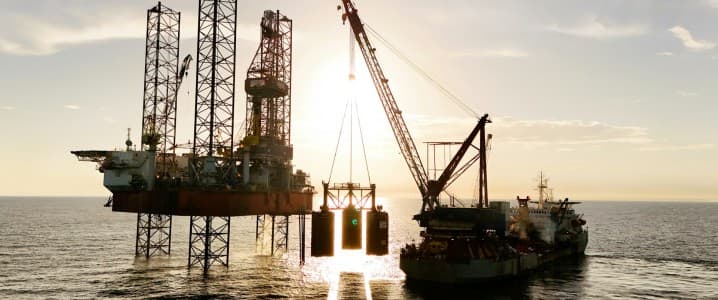Shell and its partner Sunlink Energies and Resources Limited have taken a final investment decision on the HI gas project offshore Nigeria, which will supply additional gas volumes to Nigeria LNG, the supermajor said on Tuesday.
The HI project, expected to start up by the end of the decade, will supply 350 million standard cubic feet, or about 60,000 barrels of oil equivalent, of gas per day at peak production to Nigeria LNG (NLNG), in which Shell holds a 25.6% interest.
The project will entail of a wellhead platform with four wells, to be installed at the HI field location, a pipeline to transport the multiphase gas to onshore at Bonny, and a gas processing plant at Bonny, from where the processed gas will be transported to NLNG and the condensate to the Bonny Oil and Gas Export Terminal.
The HI project will contribute to Shell’s commitment to deliver upstream and integrated gas projects coming on stream between 2025 to 2030 with a total peak production of more than 1 million barrels of oil equivalent per day (boe/d). The new project is also in line with Shell’s plans to grow its global LNG volumes by an average of 4-5% per year until 2030.
Shell expects to add 12 million tons of LNG capacity volumes by the end of the decade from projects currently under construction, Cederic Cremers, President Integrated Gas at Shell, said earlier this year. The additional capacity will come from projects in Canada, Qatar, Nigeria, and the United Arab Emirates (UAE), Cremers said at Wood Mackenzie’s conference Gas, LNG & The Future of Energy 2025.
Shell, the world’s top LNG trader, said in its annual LNG report earlier this year that global LNG demand is set to surge by 60% through 2040, pushed up by Asia’s economic growth.
In Nigeria, Shell has doubled down on the Bonga oilfield after announcing last December the final investment decision for the development of the Bonga North deep-water project—a subsea tie-back to the Shell-operated Bonga Floating Production Storage and Offloading (FPSO) facility. Bonga North currently has an estimated recoverable resource volume of more than 300 million barrels of oil equivalent and will reach a peak production of 110,000 bpd, with first oil anticipated by the end of the decade.
By Tsvetana Paraskova for Oilprice.com
More Top Reads From Oilprice.com:

